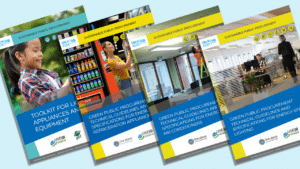Sustainable public procurement (SPP) is a process whereby Governments and other public sector organisations meet their needs for goods and services in a way that achieves the best value for money while at the same time balancing the environmental, social and economic aspects.
 Such balance can be readily achieved thought the deployment of more stringent and ambitious standards for electrical products – high energy performance standards (HEPS) to ’save energy, save money and save the planet at the same time’. SPP technical and eco-designed specifications incorporate these HEPS and “push” the overall market towards the higher energy efficiency products that waste much less energy than those complying with the base minimum energy performance standards (MEPS).
Such balance can be readily achieved thought the deployment of more stringent and ambitious standards for electrical products – high energy performance standards (HEPS) to ’save energy, save money and save the planet at the same time’. SPP technical and eco-designed specifications incorporate these HEPS and “push” the overall market towards the higher energy efficiency products that waste much less energy than those complying with the base minimum energy performance standards (MEPS).
If green public procurement specifications are incorporated as standard practice into guidelines for Government and public bodies’ procurement activities, they deliver a powerful complementary “market pull” by leveraging public purchasing power and generating higher demand for sustainable products and services. In this way, SPP allows governments to lead by example and send strong market signals, fostering private sector and consumer behaviour change, enabling the fast overall transition to a green, sustainable economy.
Against this background, UNEP’s United for Efficiency (U4E) initiative has developed a suite of Green Public Procurement Technical Guidelines and Specifications with technical recommendations and overall guidance to help countries achieve these benefits. Even where formal MEPS and labels are not yet in force, these tools can help to simplify the deployment, adoption and enforcement of eco-efficiency regulations. With an initial focus on lighting, refrigerators and air conditioners, where double the savings and climate benefits are available from using higher performance, eco-efficient, electrical products (savings the equivalent of more than 500 large powerplants globally) these new guidelines can help developing and emerging economies to:
- Develop their technical requirements for tendering processes to procure only higher energy efficiency products (targeting at least the 20% most efficient models in the market).
- Instigate and accelerate the market penetration of high impact electrical products.
- Compare the economic cost and environmental impact of different bids during the life span of the appliances being procured.
U4E has been able to provide technical assistance on SPP best practices to several governments in the framework of their national market transformation projects, and the Green Public Procurement Technical Guidelines have served as a key instrument. The guidelines provide a ready to use specification based on current international standards which references the higher efficiency standards that are already attainable by products in the global market. This allows countries to have an independent global reference to compare not only the level of their regulations, but also the products they are currently purchasing. The Guidelines also provide a fundamental tool for regional harmonisation, fostering the same ambitious levels regardless of the countries’ diversity.
Pakistan is one of the countries leading the way in the implementation of these SPP technical guidelines, and although in their early stages, similar activities are been implemented in Bolivia, Brazil, and as a regional project in Honduras, El Salvador and Cuba, currently in progress. In the case of Pakistan, the SPP standards proposed are in line with their national efficient lighting policy and strategy and new mandatory minimum energy performance standards (MEPS) for energy efficient LED lighting which came into force in December 2020. The development of these tailored SPP standards was supported by the Delivering the Transition to Energy Efficient Lighting in Residential, Commercial, Industrial, and Outdoor Sectors project, which included dedicated capacity building training sessions on sustainable public procurement best practices and technical recommendations to foster energy efficient lighting purchases in the public and semi-public sector.
According to Dr Sardar Mohazzam, Managing Director of NEECA (the Pakistan National Energy Efficiency & Conservation Authority) who are implementing the national lighting strategy, “By building sustainable public procurement into our processes for the purchase of lighting products for public sector use, we are building the market for these products and incentivising manufacturers to make high-quality, long-life LED bulbs and tubes widely available. It also allows us to lead by example in tackling lighting energy use and to ultimately meet our CO2 emission reduction targets as committed in our Nationally Determined Contributions (NDCs). “
The technical Green Public Procurement criteria have already been implemented as the targeted performance for the retrofit lighting fixtures for a pilot project. In the first stage, the procurement and installation of retrofit lighting fixtures at NEECA´s office building have been finalized. A total of 383 lamps (mainly fluorescent tubes and compact fluorescent lamps) have been replaced with energy efficient LED lamps which comply not only with the MEPS, but also with the SPP standards proposed. Annual energy savings from these LED lighting retrofits have been calculated as 10.6 MWh, equivalent to a greenhouse gas emissions reduction of approximately 6.7 tCO2. The next stages of the pilot project will involve the retrofit of LED light fixtures to replace inefficient lighting in the Quaid e Azam University Islamabad Library and the Climate Change Ministry office buildings in Pakistan.
Additionally, the UNEP-led U4E market transformation programme is active in building in-country capacities through online workshops for government and regional organisation procurement practitioners. For example, in June 2021, U4E hosted workshops on sustainable public procurement for lighting and cooling appliances aimed at government officials and regional organizational representatives in the Sub-Saharan Africa and Asia-Pacific regions, many of whom shared their experiences on procurement modalities, technologies, and assessment criteria. In November 2021 and March 2022, through participation in UNEP’s Asia Pacific Green Public Procurement (GPP) Network webinar series, experts explained how these technical guidelines can be built into the sustainable infrastructure for procurement.
A further refinement on SPP is to implement it through an energy services company (ESCO). In this way, responsibility for formulating the procurement criteria, and carrying the risk for realising the savings, rests with the ESCO. In January 2022, U4E was pleased to announce a collaboration with the Société d’Ingénierie Energétique (SIE), the Moroccan state-owned energy services company, to promote sustainable public procurement in Morocco. The parties will take a coordinated approach to address technical, financial, and regulatory considerations, drawing from the Sustainable Public Procurement Toolkit which was initially introduced through regional workshops with the African Development Bank. Sustainability criteria include robust energy efficiency requirements, and for cooling products like air conditioners or refrigerators include limits on the global warming potential of refrigerants. The first public procurement opportunity that has been identified involves performing an upgrade to the energy system of the buildings of a ministry (currently being determined). The project will showcase the potential for public entities to better leverage ESCO models. This initial opportunity will serve as an example for future scale-up by SIE in additional applications.
For one-stop access to U4E’s SPP resources, please visit the SPP page on the U4E website and find out more about how to transform your markets by leveraging the immense power of public purchases.


Leave a Reply